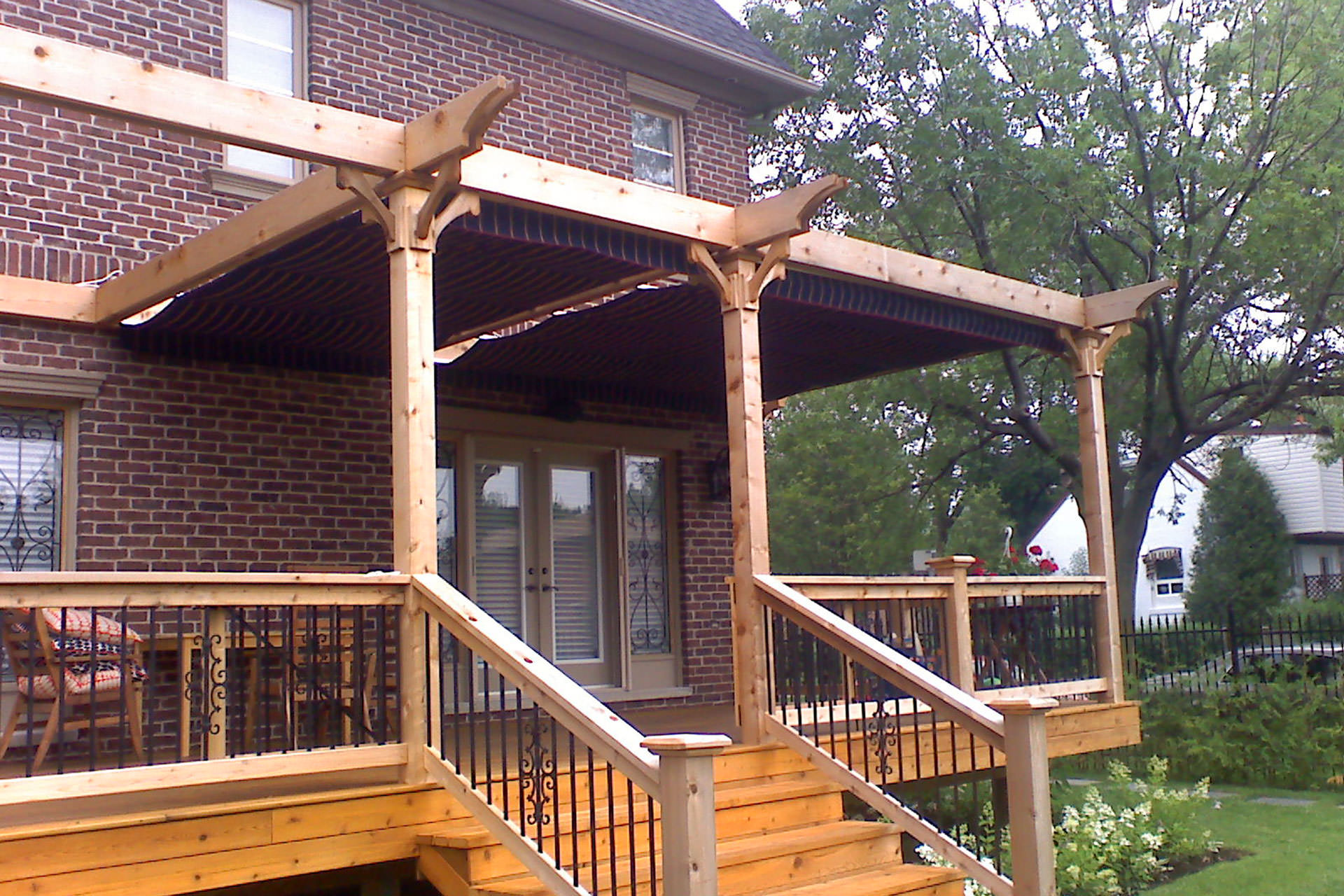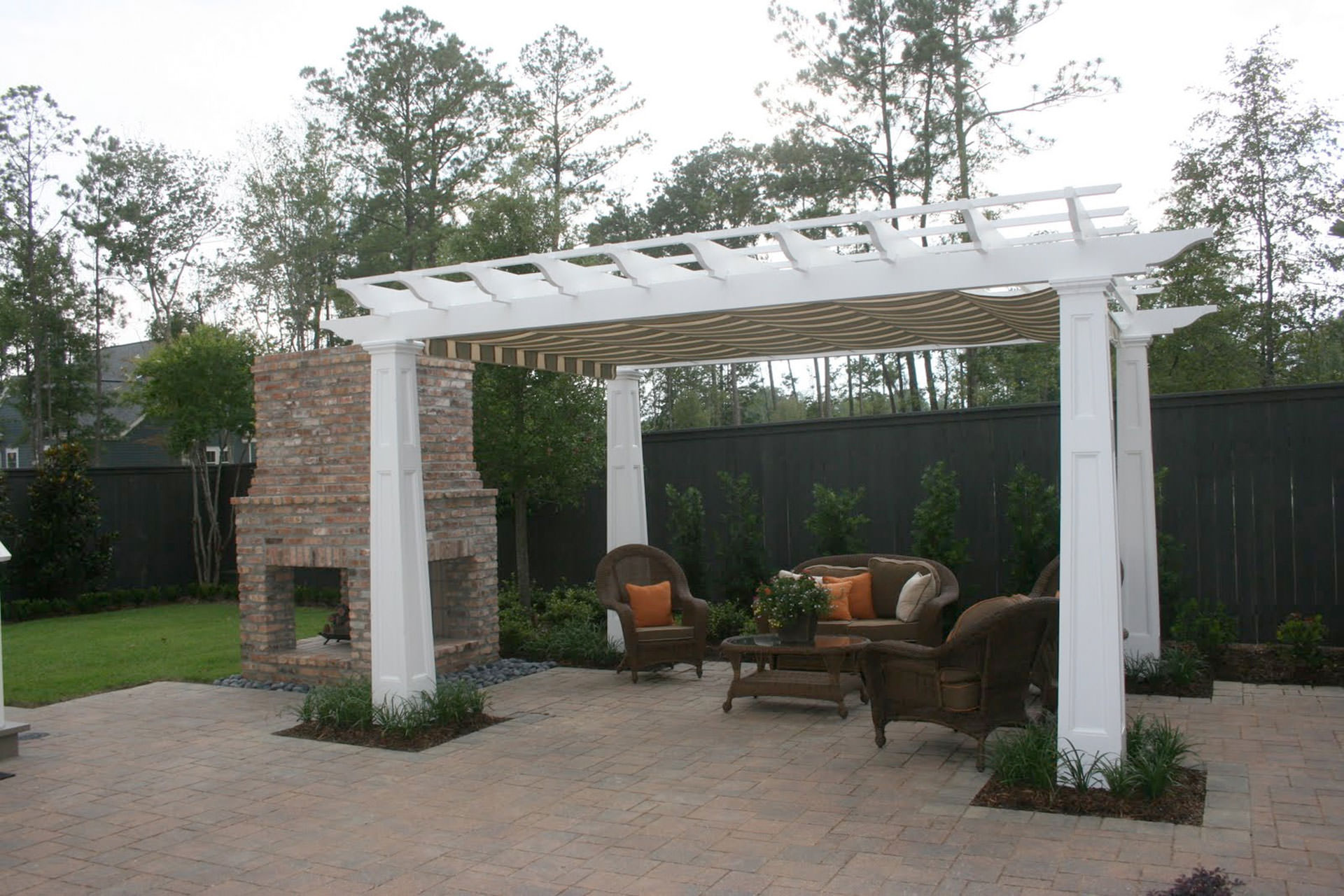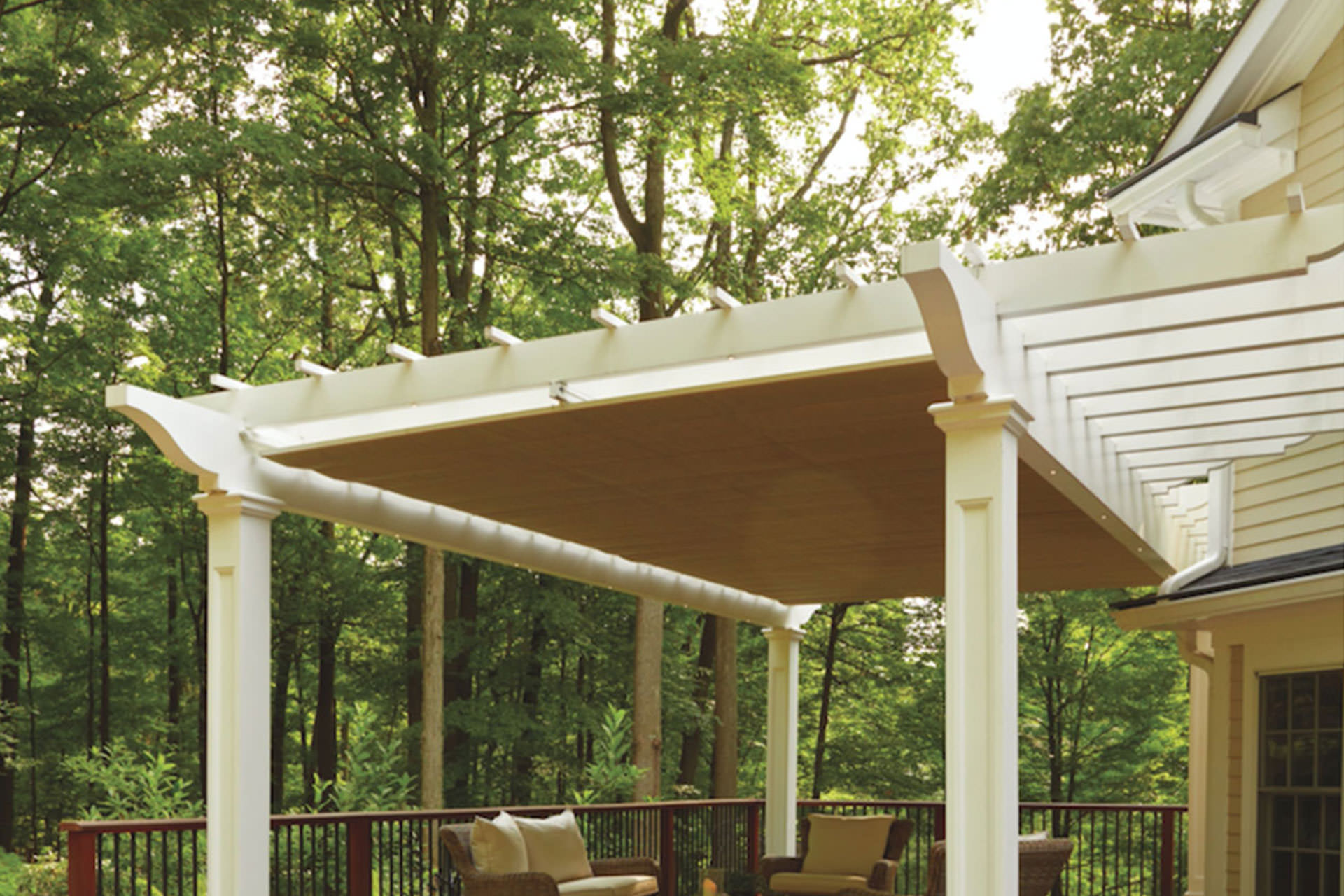Pergola Design: Attached, Freestanding or Hybrid
There are lots of different styles of pergolas, but there are only three fundamental pergola designs. They are attached, freestanding, and hybrid. Attached and freestanding pergolas are very popular and share the installed pergola ‘population’ of about 60/40 respectively. Hybrid pergolas are rare but have a place that should be considered before making any final pergola design decisions.
Attached Pergolas

Attached pergolas are defined as having one side of the pergola ‘attached’ to the wall of a home or structure. They use the wall to support that side of the pergola, usually done with a ledger beam lag screwed directly into the wall. If the wall is brick or concrete, the appropriate masonry anchors are used. The other side of the pergola is supported by a beam or beams that are in turn supported by the posts or columns, anchored to the patio or deck. Attached pergolas use half as many posts as their freestanding cousins and are less expensive as a result.
Because the ledger beam runs parallel to the wall, most attached pergolas have the rafters (or joists) running away from the wall, perpendicular to it. This is both practical from a construction perspective and from a light perspective. If the rafters or joists are running away from the house, the light from the sun can go between them and into the windows in the wintertime. This is important for those in the north where the winter sun is precious, and the sun is low in the sky even mid-day.
There are some concerns regarding attached pergolas when it comes to local bylaws and construction codes. Check with your municipality to confirm how an attached pergola will impact your taxes. In some localities, an attached pergola will require a permit and add to the tax rate for your home. However, if you construct the same pergola with posts located 6” from the wall and not anchored to the wall in any way, the taxes are not affected and there is no need for a permit.
Freestanding Pergolas

Freestanding pergolas have at least four posts and like their name says, stand without being attached to any other structure or wall. They are typically located independent of any anchored surface like a deck or patio and therefore require the posts to be sunk into post-hole footings or to have the posts surface mounted to concrete footings. Be sure your freestanding pergola is properly anchored for worry free enjoyment. Anchoring pergola posts to paving stones is not an acceptable method of anchoring.
The advantage of freestanding pergolas is there are no limitations on total size, height, or orientation. There are however always limits to the span of the beams. Unless you are working in structural steel (and we do work with that quite often), spans should be limited to twenty feet between posts to avoid special orders and special prices that go with extra-long lumber. Also, the larger the pergola, the higher the rafters should be to keep things in proportion. We are aware of a homeowner that had a 20’ X 20’ pergola made using an 8’ clearance. From a distance it looked like a coffee table. The homeowner had it raised and put on taller posts to fix it. Don’t let that happen to you.
Once again municipal laws should be considered. If you want to put your freestanding pergola in the corner of the yard, is there a minimum amount of space needed between it and the property line? This is usually called the ‘lot line setback’. Permits are sometimes a bigger concern with a freestanding pergola because it is more likely to block a neighbor’s view if it is in the yard instead of attached to your house. If it is a big area you are covering the pergola will be higher, so the neighbor could be more inclined to complain.
Hybrid Pergolas

Finally, we have the rare and exceptional hybrid pergola. I have only seen this once but it is worth mentioning because we have a collection of pictures of it in our photo gallery, and because it solves an interesting problem: how to fit an attached pergola in or at or around the corner of a house. A hybrid combines the features and benefits of both an attached and a freestanding pergola. In our gallery example, the ledger beam on the wall of the home extends beyond the wall and is supported by a post at its end. Very unique out-of-the-box thinking maximized the area of coverage in a way that could not be has if not for the hybrid design. Note that a freestanding pergola would need a post by the wall losing width as a result. Even more area would be lost if the pergola was attached, stopping at the corner of the house. By losing the fourth post, using a ledger on the wall at the back corner of the pergola, and extending that ledger beyond the wall to be supported by a post, the true definition of a hybrid is met, and the area under the pergola is maximized.
Don’t let established convention limit the scope of solutions you consider in your pergola project. Thinking outside the box, and using the expert advice of an experienced problem solver in the industry can help you get more out of your outdoor living project. If you have any questions regarding your pergola designs, especially with a use of a ShadeFX retractable canopy, please contact us with plans, drawings, photos, or sketches.
Retractable Solutions for Outdoor Spaces
Please complete the form below to download our free eBrochure.
Price List included
Related Posts
June 28, 2013
Five Things You Must Do Before Building A Pergola
April 3, 2013
Pergola Design: Custom Canopy Ideas from ShadeFX
June 16, 2012




Please send specs for an attached pergola+price list.
Thank you. E. Sazman